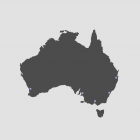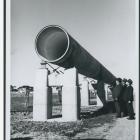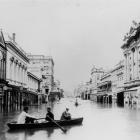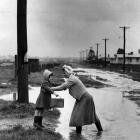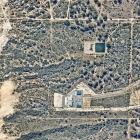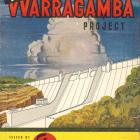Further Reading
Adelaide
A discussion of Adelaide’s location and dependence on water is in Michael Williams’ “The Making of Adelaide,” in John W. McCarty and Boris Schedvin’s (eds.) Australian Capital Cities. (Sydney: Sydney University Press, 1978, 112–43). Derek Whitlock’s Adelaide From Colony to Jubilee: A Sense of Difference (Adelaide: Savvas Publishing, 1985) provides an easily accessible overview of Adelaide up until the 1980s. The more recently published A History of South Australia by Paul Sendziuk and Robert Foster (Cambridge: Cambridge University Press, 2018) brings the history up to date, albeit with a slightly wider focus. The definitive work on water in the city of Adelaide is Chris Daniels’ edited collection Adelaide: Water of a City (Adelaide: Wakefield Press, 2010). Marianne Hammerton’s Water South Australia: A History of the Engineering and Water Supply Department (Adelaide: Wakefield Press, 1986) provides insight into the formation and achievement of this key institution. A more technical paper modeling the impact of drought and the loss of River Murray water supplies is Holger R. Maier et al., “Impact of Drought on Adelaide’s Water Supply System: Past, Present, and Future,” in Kurt Schwabe et al. (eds.) Drought in Arid and Semi-Arid Regions: A Multi-Disciplinary and Cross-Country Perspective (Dordrecht: Springer, 2013, 41–62). How to balance a city’s water supplies against the competing demands within the rural sector, with a specific case study of Adelaide, is discussed by Brian Richter et al. in “Tapped Out: How Can Cities Secure their Water Future?” Water Policy 15 (2013), 335–63. Current information on water supplies in Adelaide is available on the SA Water website https://www.sawater.com.au.
Brisbane
For an overview of Brisbane’s urban water supply, see Gordon Greenwood and John Laverty, Brisbane 1859–1959 (Brisbane: Oswald L. Ziegler, 1959) and John Cole, Shaping a City: Greater Brisbane 1925–1985 (Brisbane: William Brooks Queensland, 1984). For more recent urban history see Peter Spearritt, “The Water Crisis in Southeast Queensland” in Troubled Waters: Confronting the Water Crisis in Australia’s Cities, edited by Patrick Troy (Canberra: Australian National University, 2008, 19–36). For accounts of Brisbane floods, see Margaret Cook, “Damming the ‘Flood Evil’ on the Brisbane River,” History Australia 13, no. 4 (2016), 540–56, and “The Australia Day Floods, January 1974,” Environment & Society Portal, Arcadia (Spring 2017), no. 15, https://doi.org/10.5282/rcc/7871.
Melbourne
For an overview of Melbourne’s history in the past century, see Seamus O’Hanlon, City Life: The New Urban Australia (Sydney: NewSouth, 2018). The evolution of urban housing styles is discussed in Robin Boyd, Australia’s Home: Why Australians Built the Way They Did (Melbourne: Penguin, 1978). Tony Dingle and Carolyn Rasmussen’s book Vital Connections: Melbourne and its Board of Works 1891–1991 (Melbourne: McPhee Gribble, 1991) is an excellent institutional history. On the postwar economic boom and development of new suburbs, see Rodney Maddock, “The Long Boom 1940–1970,” in Rodney Maddock and Ian McLean (eds.), The Australian Economy in the Long Run (Cambridge: Cambridge University Press, 1987, 79–105); Tony Dingle, “People and Places in Post-War Melbourne,” in Graeme Davison et al. (eds.), The Cream Brick Frontier: Histories of Australian Suburbia (Monash Publications in History No. 19, Monash University, 1995, 27–40); Tony Dingle, “Necessity the Mother of Invention, or Do-It-Yourself,” in Patrick Troy (ed.), A History of European Housing in Australia (Cambridge: Cambridge University Press, 2000, 57–76); Lionel Frost, “Town and Country in the Menzies Years,” in J. R. Nethercote (ed.), Menzies: The Shaping of Modern Australia (Brisbane: Menzies Research Centre/Connor Court, 2016, 231–55). For a contemporary account of conditions in postwar suburbs, see Barry McCrea, “Heartbreak Streets,” Sun (Melbourne), 15 August 1955, 9–13.
Perth
For an overview of Perth’s history in the past century, see Tom Stannage, The People of Perth: A Social History of Western Australia’s Capital City (Perth: Perth City Council, 1979), and Jenny Gregory, City of Light: A History of Perth since the 1950s (Perth: City of Perth, 2003). For an Aboriginal perspective on Perth’s wetlands, see Reverend Sealin Garlett and Corina Abraham, “The Significance of the Beeliar Wetlands for Aboriginal People,” in Andrea Gaynor, Peter Newman, and Philip Jennings (eds.), Never Again: Reflections on Environmental Responsibility After Roe 8 (Crawley: UWA Publishing, 2017, 43–9). The history of Perth’s gardening preferences is discussed extensively in Andrea Gaynor, Harvest of the Suburbs: An Environmental History of Growing Food in Australian Cities (Crawley: UWA Press, 2006). On Perth’s water history, including the development of groundwater resources and the impacts of climate change, see Ruth A. Morgan, Running Out? Water in Western Australia (Crawley: UWA Publishing, 2015). For a historical study of Perth’s groundwater resources, see Bill Bunbury, Till the Stream Runs Dry: A History of Hydrography in Western Australia (Perth: Department of Water, 2010). The best areas for installing a household bore can be found online in the Perth Groundwater Map.
Sydney
For an overview of Sydney’s development in the twentieth century, see Peter Spearritt’s Sydney’s Century: A History (Sydney: UNSW Press, 2000). The definitive account of the Sydney system is W. V. Aird, The Water Supply, Sewerage and Drainage of Sydney (Metropolitan Water Sewerage and Drainage Board, 1961). See also Dan Coward, Out of Sight: Sydney’s Environmental History, 1851–1981 (Canberra: ANU, 1988). On water crises in the 1980s and 1990s, see Christopher Sheil, Water’s Fall: Running the Risks with Economic Rationalism (London, Pluto Press, 2000). For insights into the Indigenous history of the valley inundated by Warragamba Dam, see Jim Smith, The Aboriginal People of the Burrogorang Valley (Lawson: Blue Mountains Research Trust, 2016).














